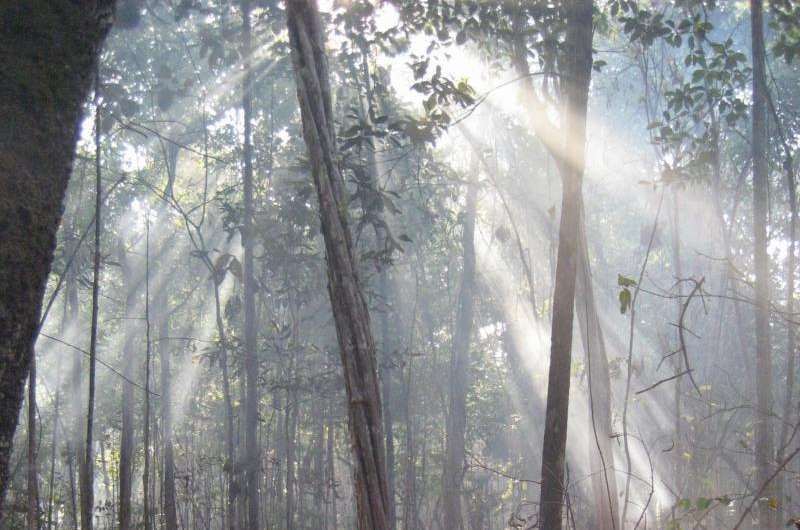An experimental burn zone in the southeastern Amazon is shown. Credit: J.K. Balch.
The longest and largest controlled burn experiment ever conducted in the Amazon rainforest has yielded new insight into the ways that tropical forests succumb to—and bounce back from—large-scale wildfires, according to new research co-authored by a University of Colorado Boulder professor.
The findings, which were published today in the journal BioScience, are the result of a decade-long study in the world's largest rainforest and highlight the complex roles that factors such as climate, burn frequency and plant diversity can play in determining the forest's response to wildfires.
The research shows that Amazon forests were able to withstand an initial, low-intensity burn without suffering permanent damage but could not hold up against repeated blazes, especially when those fires coincided with drought years.
"Timing is critical," said Jennifer Balch, assistant professor in the Department of Geography at CU-Boulder and the lead author of the new study. "The forest is quite resilient after a single burn and we can see canopy recovery. But when you get repeated fires happening right on top of one another, this can quickly transform a forest into a degraded grassland."
In 2004, the researchers established a roughly 370-acre plot in the southeastern portion of the Amazon and began testing the effects of different burn frequencies. Some sections were burned annually (a pattern reflecting human-caused wildfires) while other sections were burned every three years to mimic the natural El Nino cycle, which tends to bring drier weather to the Amazon.
Controlled fires are frequently used for land management and agricultural purposes. However, blazes can often escape into surrounding areas and burn for weeks or months at a time during the dry season. Although Brazil's deforestation rate has declined somewhat in recent years, wildfires have not.
"The widespread deforestation over the past 20 years in southeast Amazonia created a fragmented landscape that is much more flammable than before," said study co-author Paulo Brando, a scientist at the Woods Hole Research Center (WHRC) and the Amazon Environmental Research Institute (IPAM).
Wildfires burned through approximately 9.6 million acres of Amazon forest during the El Nino-driven drought year of 1997-1998, which is on par with the highest annual total ever recorded in the U.S.
"The rainforest is not a place that's supposed to burn like that," Balch said, noting that the length of the study allowed the researchers to document one of the highest tree mortality rates ever witnessed in the Amazon.
The study also found an unexpectedly strong correlation between the extent of the burn area and the presence of nearby leaf-cutter ant colonies. The ants remove leaf litter and other woody debris on the ground, taking away potential fuel sources for the blaze and effectively creating a network of natural fire breaks.
More information: BioScience, bioscience.oxfordjournals.org/content/65/9/893
Journal information: BioScience
Provided by University of Colorado at Boulder























